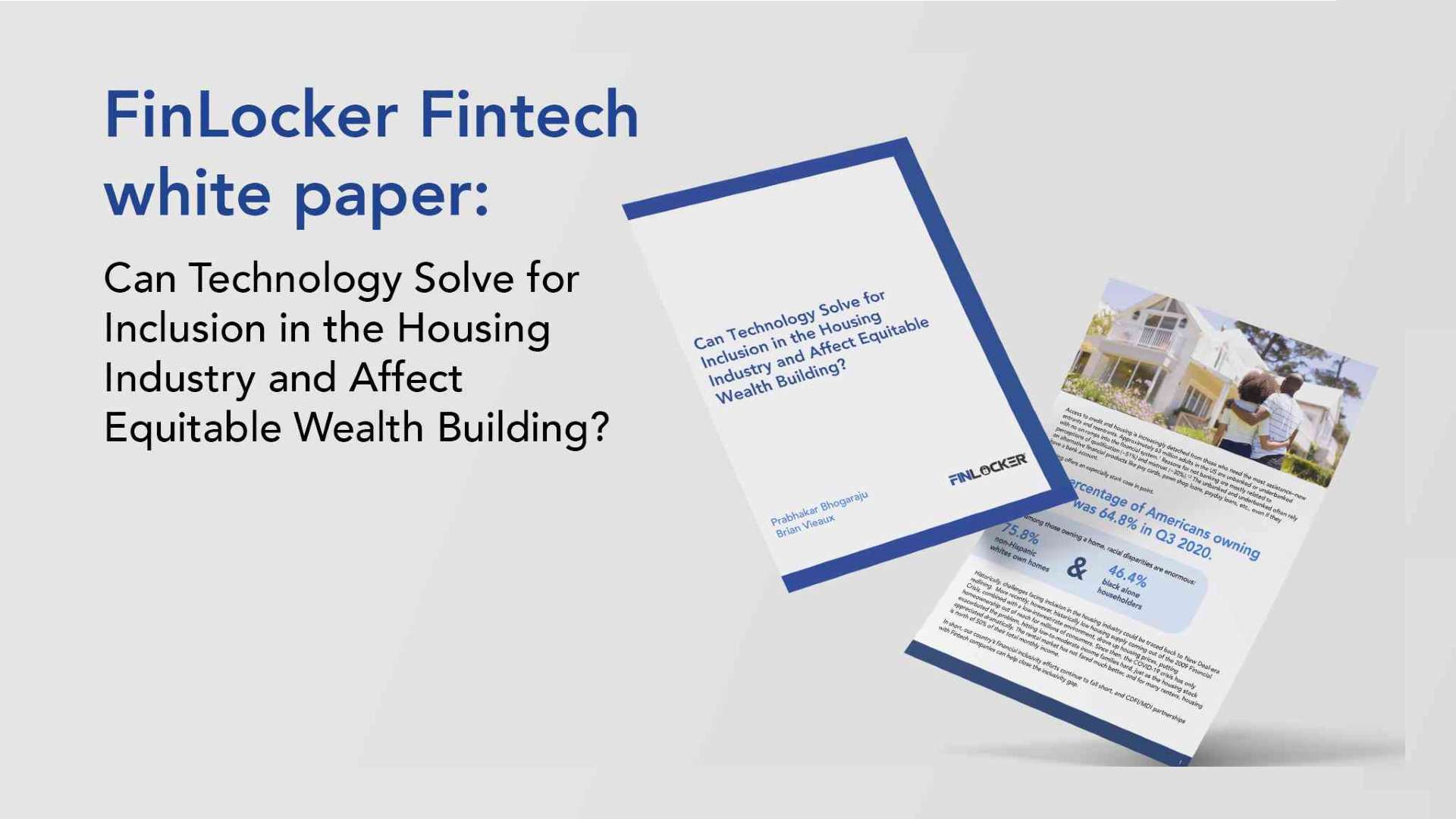Access to credit and housing is increasingly detached from those who need the most assistance. Approximately 63 million adults in the US are unbanked or underbanked with no on-ramps into the financial system.
As a financial technology firm focused on financial fitness, FinLocker sees a myriad of opportunities for technology to help solve for inclusion in the housing industry. While our emphasis has centered on the development of a digital platform and an app to increase the mortgage eligibility of low-to-moderate consumers, we see five areas of opportunity for financial technology to boost financial inclusion, especially in the housing industry:
- Affordability,
- Inadequate levels of financial literacy
- Hyper-optimized and transactional nature of housing finance
- Slow adoption curve of alternative data sources and technologies, and
- Consumer control of their data, including portability, privacy, and protection
When you download our free paper, you’ll learn how the mortgage industry and financial institutions can adopt technology to solve these sub-set areas for inclusion:
- Getting consumers mortgage ready, accelerating ‘approvability,’
- Helping consumers avoid “gotchas” with contextual, contemporary, and timely education and tools, and
- Supporting decline-to-approval by moving our industry from optimizing transactions to serving longer-term relationships.
The paper was first presented at DC Fintech Week in October 2021.



